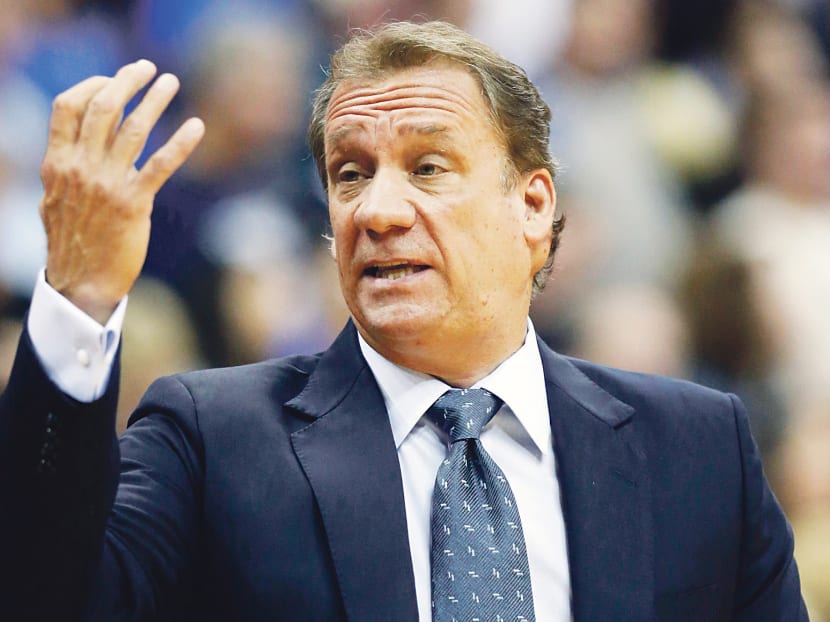S$30b TV deal means new ballgame for NBA
NEW YORK — For the longest time, the cash infusion that the NBA was expected to gain from a renegotiated television contract was nothing more than a whisper, a mythical figure that would generate wild guesses about the total.

Minnesota Timberwolves head coach Flip Saunders. Photo: AP
NEW YORK — For the longest time, the cash infusion that the NBA was expected to gain from a renegotiated television contract was nothing more than a whisper, a mythical figure that would generate wild guesses about the total.
This month, the numbers finally were identified — US$24 billion (S$30 billion), nearly tripling the league’s revenues on an annual basis.
No one is quite sure exactly how the stunning total is going to impact how the NBA and its players conduct business. But owners, general managers, players and agents are all grappling with the unprecedented change to the fundamental economic picture.
“There will be a lot of decisions that will need to be made strategically, from how to design a contract to decisions you’re going to make on when to put yourself into the marketplace based upon how you project the cap is going to be affected by the revenue,” veteran agent Mark Bartelstein of Priority Sports told The Associated Press.
One thing is certain: The NBA will never be the same after the contracts with ESPN and Turner fully kick in for the 2016-17 season.
“It’s a game-changer for the league,” said Minnesota Timberwolves coach Flip Saunders. “If you’re in the league, or you’re a coach or a player or an owner and have more money coming in, that’s a benefit.”
It also brings with it complications. Presently, the TV deals are set to kick in for 2016.
The one-time revenue spike would drive the salary cap, the amount of money a team can spend on player salaries, up by tens of millions of dollars and flood the free-agent market with available cash.
The players who would benefit most would be those who happen to be free agents that summer.
LeBron James, set to earn about US$20.6 million this year before league revenue nearly triples, is one of several players who structured his contract with the Cavaliers to account exactly for that possibility.
But some want to spread it around.
Commissioner Adam Silver, the owners and NBA Players’ Association executive director Michele Roberts are examining ways to phase in the fiscal surge so players under contract for the summer of ’16 can also benefit, and so teams can prepare for the changes.
Complicated as it sounds, it’s becoming simple for the players. The US$24 billion price tag is crystallising a new negotiating position in 2017, when either side can opt out.
“Last year, the fans didn’t really get to know exactly what was going on as far as revenue,” said Oklahoma City star Kevin Durant, a free agent in 2016.
“But now that (the TV deal is done), it feels like we have a little bit of leverage, I guess, as players.” AP





